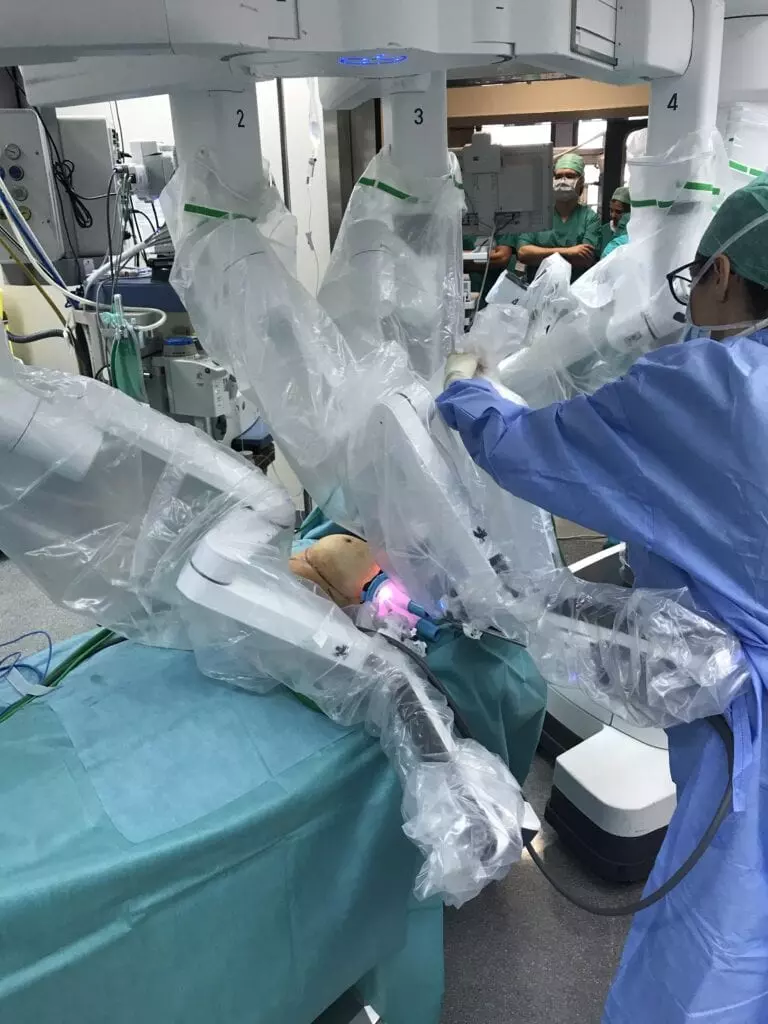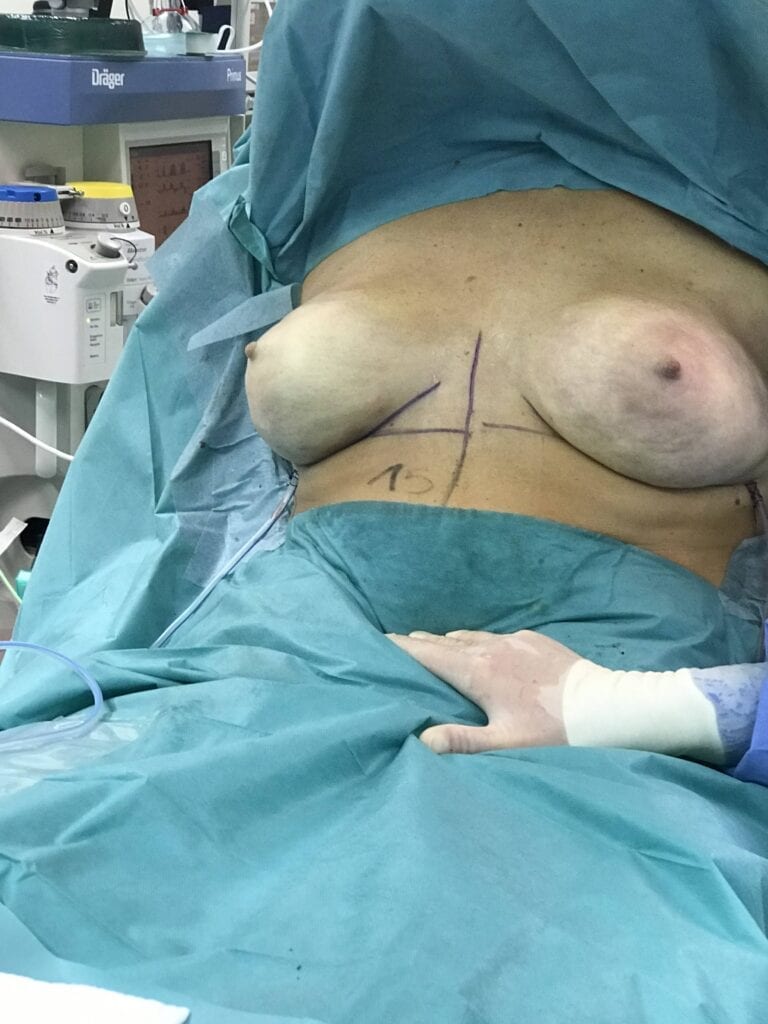The technique of a robotic mastectomy was born in 2014 at the European Institute of Oncology in Milan. It was born from the need to provide patients with a better aesthetic result when having a mastectomy due to cancer or due to prophylactic (preventative) surgery. This results in a better quality of life. The development of this technique is under continuous evaluation and performed within a clinical trial.
Triple negative breast cancer mainly affects postmenopausal women but can also be diagnosed at a young age. In addition, some patients affected by triple negative breast cancer can carry a BRCA1 or BRCA2 mutation. This predisposes them to develop a breast cancer on the other side. This population is often represented by young women who are candidates for bilateral nipple sparing mastectomy.
ROBOTIC MASTECTOMY

The application of robotic breast surgery is a recent practice and, for now, limited to particular cases and indications. This new surgical technique allows surgeons to hide the skin scars under the arm and make the skin incision smaller than the classic technique. The incision is performed in the axilla (armpit), for a maximum length of 3 cm (1.2 inches), from which the whole intervention is conducted, including the reconstructive phase. Robotic breast surgery requires a little longer time than the traditional technique. Thanks to the robot, even the most remote points of the gland are easily removed. The mammary gland is totally removed from the small axillary incision. Sentinel lymph node biopsy or axillary dissection is also feasible during robotic mastectomy.
Reconstruction After Robotic Mastectomy

Different types of reconstruction are possible although immediate implant breast reconstruction is preferred, with aesthetic advantages for the patients. The picture on the right shows the immediate results after the reconstruction has been completed.
Indications
Not all women candidates to mastectomy are eligible for robotic surgery. The surgery can be performed in women with a small/medium breast (from cup A to C breast size), with a low degree of breast ptosis (or drooping).
Randomized Clinical Trial
Our experience in Milan has been gradual. After an initial feasibility and safety study, a randomized study to compare the outcome of patients treated with robotic mastectomy with patients treated with open classical technique was conducted at the European Institute of Oncology in Milan. A randomized study selects patients to one arm of the study or the other without interference by the doctor or the patient. Results of this study are actually under examination on a continuous basis.
The Opinion of the Patients
The focus of the study was the administration of scientifically validated questionnaires to patients regarding their quality of life after mastectomy. The patients treated with the robot said they were on average more satisfied than those treated with traditional technique. The hidden incision by the arm and a better quality of the tissues due to a more precise surgery resulted in greater satisfaction. There also appeared to be greater preservation of nipple sensitivity with the robot than with the classic, conventional surgery.
Conclusion
In our experience, triple negative breast cancer women received robotic mastectomy after preoperative chemotherapy. It is a good option for young women, especially in triple negative tumors arising on BRCA type mutation, which typically arise early and in which contralateral prophylactic mastectomy is also indicated.
Editorial Note:
Robotic mastectomy for cancer in the US has not yet been approved by the FDA. We hope that clinical trials similar to the one one from Milan will start in the near future.